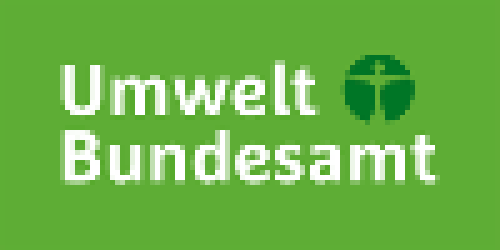meta data for this page
Differences
This shows you the differences between two versions of the page.
| sector:agriculture:agricultural_soils:3df_agriculture_other [2023/10/30 09:10] – [Methodology] kotzulla | sector:agriculture:agricultural_soils:3df_agriculture_other [2024/11/06 14:54] (current) – external edit 127.0.0.1 | ||
|---|---|---|---|
| Line 1: | Line 1: | ||
| - | ====== 3.D.f - Agriculture: | + | ====== 3.D.f - Agriculture: |
| - | + | ||
| - | ===== Country Specifics ===== | + | |
| - | + | ||
| - | So far, the only activity and emissions reported in 3.D.f - Agriculture: | + | |
| ==== Background ==== | ==== Background ==== | ||
| Line 56: | Line 52: | ||
| HCB has never been contained in co-formulants of approved pesticides (communication of the Federal Office of Consumer Protection and Food Safety (BVL, 2015)((BVL (2015) (Bundesamts für Verbraucherschutz und Lebensmittelsicherheit Braunschweig): | HCB has never been contained in co-formulants of approved pesticides (communication of the Federal Office of Consumer Protection and Food Safety (BVL, 2015)((BVL (2015) (Bundesamts für Verbraucherschutz und Lebensmittelsicherheit Braunschweig): | ||
| - | In the past, some applicants listed maximum HCB concentrations in technical active substances in certain lindane-containing substances. The concentrations given amounted to ≤ 0.1 g/kg, a level oriented to the detection limits of the analysis method used at the time. Substances conforming to that maximum concentration were approved only through 1989 or 1990 (in one case, through 1995). Obligations to report substance quantities sold did not take effect until 1998. For the other relevant active substances, the BVL has no information on HCB as an impurity. However, publications in recent years have included data from 1977 onward (BVL 2022) ((BVL 2022, “ Absatz an Pflanzenschutzmitteln in der Bundesrepublik Deutschland Ergebnisse der Meldungen gemäß § 64 Pflanzenschutzgesetz für das Jahr 2017, korrig. Version von Nov 2018, Tab 3.2, https:// | + | In the past, some applicants listed maximum HCB concentrations in technical active substances in certain lindane-containing substances. The concentrations given amounted to ≤ 0.1 g/kg, a level oriented to the detection limits of the analysis method used at the time. Substances conforming to that maximum concentration were approved only through 1989 or 1990 (in one case, through 1995). |
| + | |||
| + | Obligations to report substance quantities sold did not take effect until 1998. For the other relevant active substances, the BVL has no information on HCB as an impurity. However, publications in recent years have included data from 1977 onward (BVL 2022) ((BVL 2022, “ Absatz an Pflanzenschutzmitteln in der Bundesrepublik Deutschland Ergebnisse der Meldungen gemäß § 64 Pflanzenschutzgesetz für das Jahr 2017, korrig. Version von Nov 2018, Tab 3.2, https:// | ||
| ==== Methodology ==== | ==== Methodology ==== | ||
| Line 63: | Line 61: | ||
| The emissions were calculated in keeping with the method proposed in the EMEP (2019) ((EMEP (2019): EMEP/EEA air pollutant emission inventory guidebook – 2019, EEA Report No 13/2019, https:// | The emissions were calculated in keeping with the method proposed in the EMEP (2019) ((EMEP (2019): EMEP/EEA air pollutant emission inventory guidebook – 2019, EEA Report No 13/2019, https:// | ||
| - | <m> EM_pest = Σm_pest_i * EF_pest_i </m> | + | <m> EM_pest = Sigma m_pest_i * EF_pest_i </m> |
| To estimate the emission of HCB which is present as an impurity, an impurity factor (IF) has to be considered in the calculation: | To estimate the emission of HCB which is present as an impurity, an impurity factor (IF) has to be considered in the calculation: | ||
| - | <m> EM_pest = Sigma m_pest_i * IF_j,i * EF_pest_i </m> | + | <m> EM_pest = Sigma m_pest_i * IF_(j,i) * EF_pest_i </m> |
| where: | where: | ||
| - | * EM< | + | * EM< |
| - | * m< | + | * m< |
| - | * IF< | + | * IF< |
| * EF< | * EF< | ||
| Line 143: | Line 141: | ||
| The BVL has no information on past or current concentrations of impurities in the active substances atrazine, simazine, propazine and quintozine that have been placed on the market. For this reason, the information on impurity levels compiled in the EMEP/EEA Guidebook 2019 is used (cf. Table III). | The BVL has no information on past or current concentrations of impurities in the active substances atrazine, simazine, propazine and quintozine that have been placed on the market. For this reason, the information on impurity levels compiled in the EMEP/EEA Guidebook 2019 is used (cf. Table III). | ||
| - | // | + | __Table 4: Maximum concentrations of HCB impurities in relevant active substances, in mg/kg__ |
| - | Table III: Maximum concentrations of HCB impurities in relevant active substances, in mg per kg// | + | ^ |
| - | ^ Impurity content | + | | 1987-1994 |
| - | | 1987-1994 | + | | 1995-1997 |
| - | | 1995-1997 | + | | 1998 - 1999 | 300 | 50 |
| - | | 1998 - 1999 | + | | 2000 |
| - | | 2000 | | + | | 2001 - 2017 | 40 |
| - | | 2001 - 2017 | + | | 2018 - 2022 | 10 |
| - | | 2018 - 2022 | + | |

